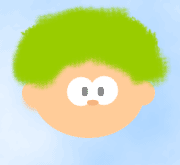On the detection of collisions during game programming (c) 2005 by YSS, sdD+J., dnc. ------------------------------------------------------ Introduction ------------ Today we'll discuss briefly the detection of collisions between MOBs on screen during the process of game programming and execution. First let's introduce collisions and let's think about them for a while. What is a collision? A collision can be thought of as an interaction between two masses in space-time. It is very important the way we idealize collisions during game programming before writing one single line of code, just as it is important to know the difference between referring to character maps as tiles when writing games. In the process of thought that takes place when creating a microprocessor controlled game, there is a BIG difference. The way we focus on the process of two objects colliding and the results it implies will reflect greatly on the actual collision detection routines we will come up with. Actually, the performance of such routines will depend greatly on how we picture things in our minds before programming. There is a difference between a mathematician writing games, an application's software developer employed to write games, an artist who creates with computers and who makes games, a professional game maker whose life is about making games, a smart child with a dream writing a game and a student who MUST use mathematics and write a game. The outcome is different each time. The gameplay reflects this outcome. Part of that outcome has to do with the way each mind focuses on the actual problem of creating the game. While someone immersed in mathematics may view a screen image, a MOB (movable object block) as an area of some sort -polygons perhaps- a child isn't likely to think of the MOBs this way. A child may think of the MOB as an actual entity, an action figure he has to move around the screen, regardless of the technical difficulties involved: that's secondary. A professional game programmer may think of the MOBs as subcircuits and an artist isn't likely to think of pixels as light representations of digital values. The same happens when one thinks about writing a collision detection routine, however simple it may appear to be. I've seen commercial games fail to attract an audience simply because the collision detection routines weren't good enough to provide a "playable enough" experience. From the many different ways to visualize collisions on screen and the many different methods to make the routines work, the one we choose will affect the output greatly. That's why it is so important to understand collisions, maybe not in the physical world, but to understand what it is that we really need from our collision detection routines on screen and what it is that we must get from them while we write them, when we test them and when they seem ready to be used. The bottom line is that the better we're able to translate the actual collision process from our thoughts into the game in practice without complicating things too much, the better the actual gameplay will be -at least as far as the collision detection routines go. YSS pixelrat@hotmail.com http://www.oocities.org/yssmlp ///////////////////////////////////////////////////////
